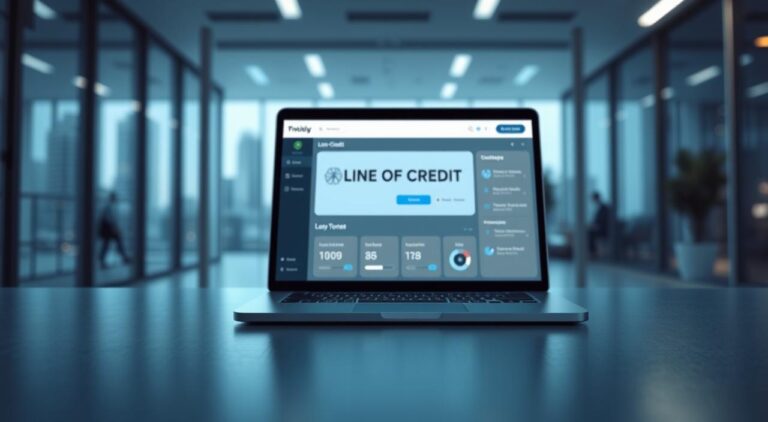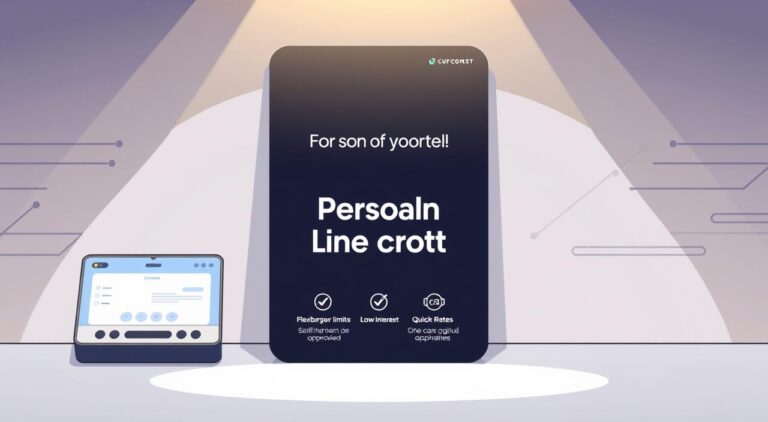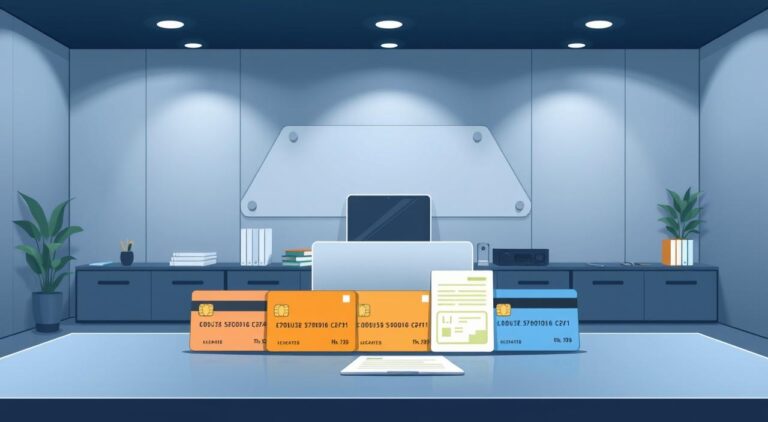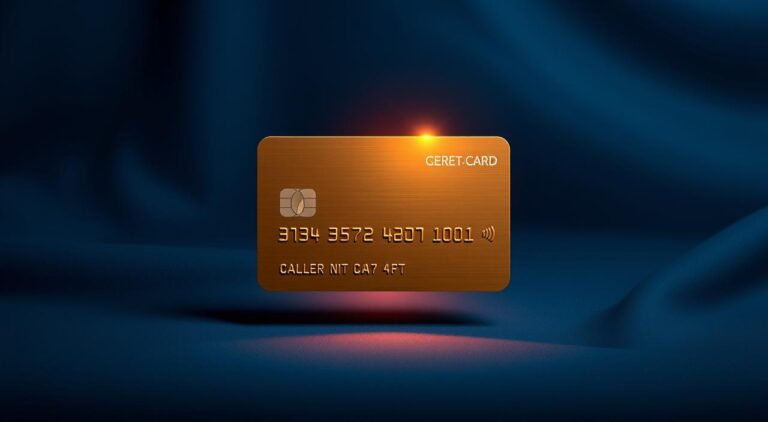Learn How to Qualify for a High Limit Unsecured Credit Line
Having access to a high limit unsecured credit line can be a game-changer for both personal and business financial management. It offers the flexibility to manage expenses and investments without the need for collateral.
Unlike secured credit options, unsecured credit lines rely on the borrower’s creditworthiness, making them a preferred choice for many consumers. However, qualifying for a high limit can be challenging due to the lender’s risk assessment criteria.
This comprehensive guide will walk you through the step-by-step process of understanding eligibility requirements and improving your chances of approval. With the right preparation and knowledge, you can position yourself for a higher credit limit than you might expect.
Key Takeaways
- Understand the benefits and challenges of high limit unsecured credit lines.
- Learn how credit score impacts your eligibility.
- Discover the importance of creditworthiness in securing unsecured credit.
- Find out how to prepare for a higher credit limit.
- Improve your chances of approval with the right financial strategies.
Understanding Unsecured Credit Lines
Understanding the nuances of unsecured credit lines is crucial for making informed financial decisions. Unsecured credit lines offer a financial safety net without the need to pledge assets as collateral, distinguishing them from secured credit products like home equity lines of credit (HELOCs).
When considering credit options, it’s essential to grasp the differences between secured and unsecured credit. Secured credit, such as a HELOC, requires collateral, typically a valuable asset like your home, to secure the loan. In contrast, unsecured credit lines rely on your creditworthiness and income history.
What Makes a Credit Line “Unsecured”?
An unsecured credit line is not backed by collateral. Instead, lenders assess your credit score, income, and employment history to determine your eligibility. This type of credit is riskier for lenders, which often results in higher interest rates compared to secured credit options.
Differences Between Secured and Unsecured Credit
The primary differences between secured and unsecured credit lie in their requirements and implications. Secured credit, like a mortgage or HELOC, necessitates collateral and often offers lower interest rates due to the reduced risk for lenders. Unsecured credit lines, on the other hand, focus on your credit history and income, providing flexibility without risking specific assets. Understanding these distinctions is key to choosing the right credit product for your needs.
Benefits of High Limit Unsecured Credit Lines
Unsecured credit lines with high limits can be a valuable financial tool, offering benefits such as improved credit scores and financial flexibility. Having access to such credit lines can significantly enhance one’s financial stability.
Financial Flexibility and Emergency Funds
A high limit unsecured credit line provides financial flexibility, allowing individuals to cover unexpected expenses or take advantage of investment opportunities. It serves as an emergency fund, offering peace of mind and financial security. As
“Having a safety net can reduce financial stress and improve overall well-being.”
Building Credit History Without Collateral
Responsibly using an unsecured credit line can improve your credit score over time through positive payment history. Maintaining low utilization ratios on unsecured credit lines positively impacts your credit report. This demonstrates to future lenders your ability to manage credit without collateral backing, potentially leading to better terms and higher limits on future credit products.
- Managing revolving credit is crucial for credit scoring models.
- Regular, on-time payments create a strong credit foundation.
- Low credit utilization ratios positively impact your credit profile.
Key Factors That Determine Your Eligibility
Several critical factors influence whether you’ll be approved for a high limit unsecured credit line. Lenders assess these elements to determine the risk of lending to you.
Credit Score Requirements
A good credit score is essential for qualifying for a high limit unsecured credit line. Typically, lenders prefer applicants with a credit score of 700 or higher, as it indicates a history of responsible credit behavior.
Income and Employment History
Lenders also evaluate your income and employment history to ensure you have a stable financial foundation. A steady income and long-term employment demonstrate your ability to make regular payments.
Debt-to-Income Ratio
Your debt-to-income (DTI) ratio is another crucial factor. It’s calculated by dividing your total monthly debt payments by your gross monthly income. Most lenders prefer a DTI ratio below 36%. Here are key points about DTI ratio:
- DTI measures monthly debt payments against gross monthly income.
- Lenders typically prefer DTI ratios below 36%, but some may allow up to 43-45% for qualified applicants.
- A lower DTI ratio improves approval chances and typically results in higher approved credit limits.
How to Qualify for a High Limit Unsecured Credit Line
Qualifying for a high limit unsecured credit line requires careful preparation and a thorough understanding of the qualification process. Lenders assess various factors to determine eligibility, and being informed can significantly enhance your chances of approval.
Step-by-Step Qualification Process
The qualification process involves several key steps. First, lenders evaluate your creditworthiness, considering your credit history and score. Next, they assess your income and employment stability to ensure you can manage the credit line responsibly. Finally, they review your debt-to-income ratio to confirm you’re not over-extending yourself. By understanding these steps, you can better prepare your application and increase your likelihood of securing a high limit unsecured credit line.
Documentation You’ll Need to Prepare
To streamline the application process, it’s crucial to have the necessary documentation ready. This includes:
- Personal identification documents, such as a government-issued photo ID and Social Security number
- Income verification documents, including recent pay stubs, W-2 forms, and tax returns, especially for self-employed applicants
- Financial statements, such as bank statements and investment account statements, to demonstrate financial stability
- Business documentation, if applicable, including business tax returns, profit and loss statements, and business licenses
Having these documents organized can save time and help avoid delays in the approval process. As one financial expert notes, “Preparation is key to a successful credit application.” Organizing your information and credit documents beforehand can make a significant difference in your ability to secure a high limit unsecured credit line or loan.
Improving Your Credit Score for Higher Limits
Enhancing your credit score can significantly improve your chances of getting a high limit unsecured credit line. A good credit score indicates to lenders that you are a responsible borrower, capable of managing your debt effectively.
Paying Down Existing Debt
Reducing your existing debt is a crucial step in improving your credit score. High credit utilization can negatively affect your score, so paying down debt can help. Here are some strategies:
- Focus on paying down high-interest debt first.
- Consider consolidating debt into a single, lower-interest loan.
- Make regular payments to show lenders you can manage your debt.
Establishing Positive Payment History
Payment history accounts for approximately 35% of your FICO score, making it the single most important factor in credit scoring. To establish a positive payment history:
- Set up automatic payments to ensure on-time payments.
- Avoid late payments, as even a single 30-day late payment can drop your score by 50-100 points.
- If you’ve missed payments in the past, consider writing goodwill letters to creditors to request removal of isolated late payments.
Maintaining a perfect payment history while applying for new credit is crucial, as recent late payments are weighted more heavily.
Demonstrating Financial Stability to Lenders
To qualify for a high limit unsecured credit line, applicants must showcase their financial stability to lenders. This involves verifying consistent income and maintaining a robust credit history.
Consistent Income Verification
Lenders require proof of stable income to ensure borrowers can repay the credit line. Consistent income verification is crucial, as it directly impacts the lender’s confidence in the borrower’s ability to manage their debt obligations.
Length of Credit History
The length of your credit history significantly affects your credit score, accounting for approximately 15% of your FICO score. Credit scoring models evaluate the age of your oldest account, the average age of all accounts, and how long specific account types have been established. Keeping older accounts open can benefit your credit score by maintaining a longer average account age. Having established relationships with financial institutions can improve approval odds for unsecured credit lines. A thin credit file might limit initial credit line offers, regardless of income. Strategies for building credit history length include becoming an authorized user on established accounts or starting with secured credit products.
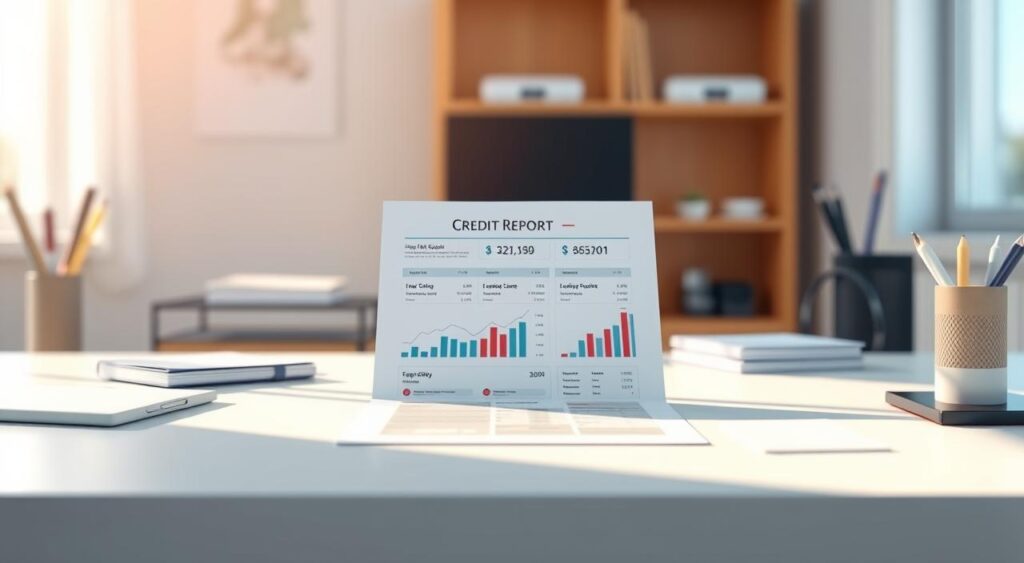
Types of High Limit Unsecured Credit Products
Unsecured credit products with high limits provide significant financial flexibility for diverse needs. These products cater to both individuals and businesses, offering various benefits and features.
Personal Lines of Credit
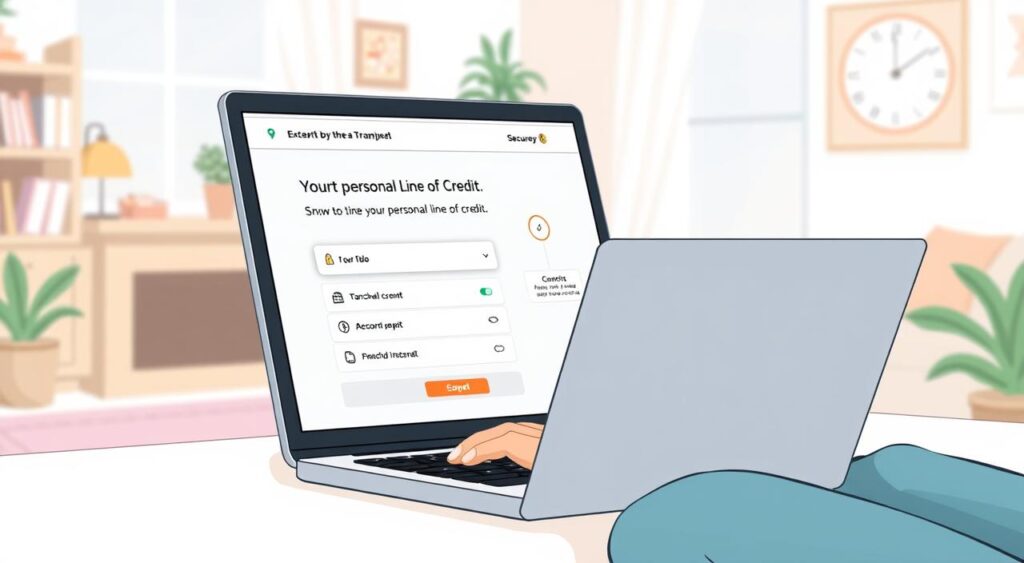
Personal lines of credit offer individuals a flexible funding solution without requiring collateral. These credit lines often come with competitive interest rates and can be used for various personal expenses or emergencies. With a good credit score, individuals can qualify for higher limits, typically ranging from $10,000 to $100,000 or more.
Business Lines of Credit
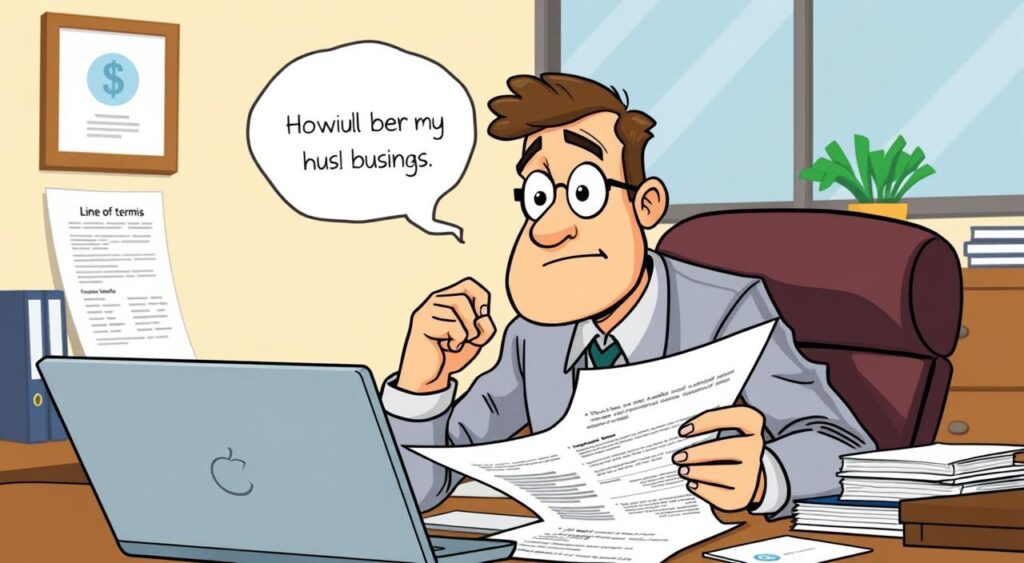
Business lines of credit are designed for business operations and growth, offering flexible funding without collateral. These credit lines often feature higher limits, business-specific terms, and potential tax advantages. Established businesses with strong financials can qualify for substantial unsecured limits, making these products valuable for managing cash flow, inventory purchases, and expansion opportunities.
Comparing Interest Rates and Terms
When comparing unsecured credit lines, understanding the nuances of interest rates and terms is crucial. This knowledge enables you to make informed decisions and choose the credit line that best suits your financial needs.
Variable vs. Fixed Interest Rates
Unsecured credit lines often come with either variable or fixed interest rates. Variable interest rates can fluctuate based on market conditions, potentially increasing or decreasing your monthly payments. In contrast, fixed interest rates remain constant over the life of the credit line, providing predictable payments. Understanding the implications of each can help you decide which type aligns better with your financial situation.
Understanding Fee Structures
Besides interest rates, fee structures play a significant role in the total cost of an unsecured credit line. Common fees include annual fees, origination fees, and cash advance fees. It’s essential to identify any hidden fees, such as late payment penalties and over-limit fees, which can significantly impact your borrowing costs. Carefully reviewing the fee structure helps you avoid unexpected expenses and choose a credit line with the most favorable terms.
Applying for Your Unsecured Credit Line
Applying for a high limit unsecured credit line can be a straightforward process if you have the right information and preparation. Lenders offer various application options to suit different needs.
Online Application Process
The online application process is convenient and efficient. You can apply from the comfort of your own home, at any time, using your lender’s online banking platform. To ensure a smooth application, have your financial information readily available, including details about your income, employment, and existing debts.
Most lenders provide a user-friendly online application form that guides you through the necessary steps. You’ll typically need to provide personal identification, financial data, and consent to a credit check.
In-Person Application Options
For those who prefer a more personalized experience, in-person applications at banks or credit unions are a viable option. Visiting a branch allows you to receive guidance from a loan officer who can help you navigate the application process and answer any questions you may have.
When applying in person, it’s essential to bring necessary documents, including identification, proof of income, and details about your existing debts. Building a relationship with your lender can also improve your chances of approval, especially if you already have accounts with the institution.
Strategies to Increase Your Credit Limit
Credit limit increases are often the result of a combination of financial discipline and strategic banking practices. To achieve a higher credit limit, it’s crucial to demonstrate to your lender that you’re a reliable borrower.
Timing Your Credit Limit Increase Requests
The timing of your credit limit increase request can significantly impact its success. Requesting an increase after a period of consistent, on-time payments can improve your chances. Avoid requesting increases during periods of financial instability, as this can negatively affect your application.
Building Relationship with Your Lender
Establishing a multifaceted relationship with your lender can enhance your eligibility for a credit limit increase. This includes maintaining checking and savings accounts, as well as investments, with the same financial institution. Relationship banking offers several benefits, including preferential interest rates, fee waivers, and higher approval odds for credit products. Regular communication with your lender, updating them on positive financial changes, can also bolster your request.
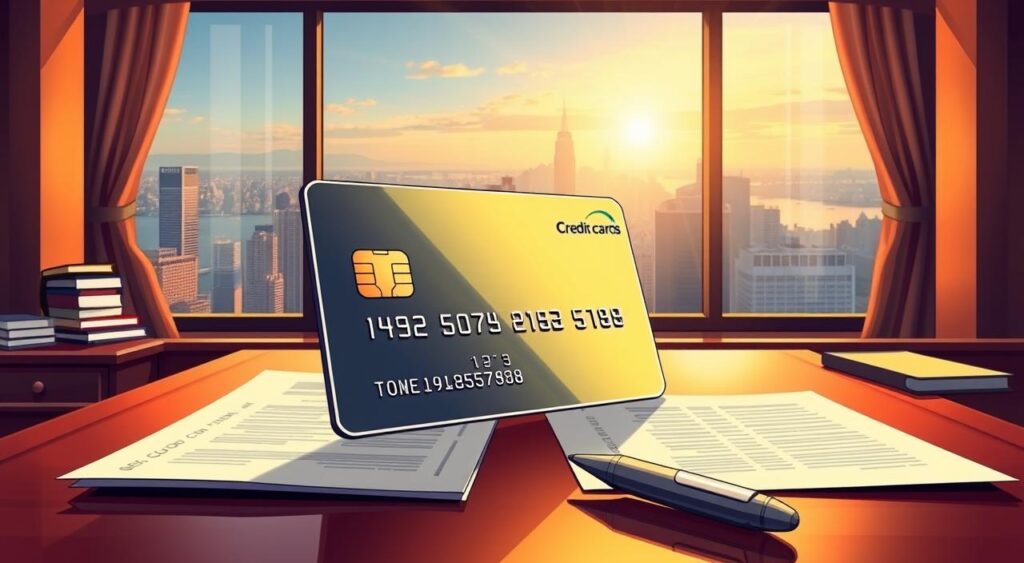
- Demonstrating loyalty and stability through longer customer relationships can positively influence lenders.
- Leveraging an excellent payment history can help negotiate better terms and higher limits.
- Personal relationships with bankers or account managers can sometimes advocate for your credit line increase requests.
By adopting these strategies, you can improve your chances of securing a higher credit limit, thereby enhancing your financial flexibility.
Managing Your Unsecured Credit Responsibly
Effective management of your unsecured credit line is key to leveraging its benefits without incurring debt. To achieve this, it’s crucial to have a clear understanding of how to handle your credit responsibly.
Creating a Repayment Plan
Developing a repayment plan is essential for managing your unsecured credit line. You should make a minimum payment each month that covers at least the interest on the funds borrowed. Setting up a fixed repayment amount on a recurring schedule can help you pay down your balance efficiently.
Avoiding Common Pitfalls
To avoid common pitfalls, beware of treating your unsecured credit line as additional income rather than a temporary financing solution. Continually maxing out your credit line can damage your credit score and create a cycle of debt. For more information on managing your finances effectively, you can visit this resource on smart home decor investments and ROI.
Key strategies to avoid include:
- Avoiding discretionary spending and focusing on planned expenses with clear repayment strategies
- Monitoring interest rate changes on variable-rate credit lines and adjusting your budget accordingly
- Recognizing signs of overreliance on credit, such as using it for basic necessities or making minimum payments across multiple accounts
- Regularly reviewing statements for errors, unauthorized charges, or unexpected fee increases
What to Do If You’re Denied
If your application for a high limit unsecured credit line is rejected, understanding the reasons behind the decision is crucial. Lenders typically provide a reason for denial, which could be related to your credit score, income, debt-to-income ratio, or other factors.
Understanding Rejection Reasons
Common reasons for rejection include high credit utilization, late payments, and insufficient income. For instance, having a maxed-out credit card can significantly lower your chances of approval, as it indicates a higher risk for lenders.
Steps to Take Before Reapplying
Before reapplying, it’s essential to address the issues that led to the initial denial. This may involve:
- Paying down existing debt to improve your credit utilization ratio.
- Disputing any errors on your credit report.
- Stabilizing your income and employment history.
- Considering secured credit products or credit builder loans to establish a positive payment history.
It’s also crucial to wait for an appropriate amount of time before reapplying, typically 3-6 months for minor issues and 6-12+ months for more significant concerns. During this period, focus on strengthening your overall financial position by budgeting, saving, and improving your credit score. Only reapply when you’re confident that the original rejection reasons have been adequately addressed, and consider alternative lenders if necessary.
Alternative Options to Consider
If you’re struggling to qualify for a high limit unsecured credit line, there are alternative options you can consider.
Secured Credit Lines
A secured credit line requires collateral, such as your home, to secure the loan. A home equity line of credit (HELOC) is a common example. Revolving credit allows you to access funds up to your credit limit, repay them, and reuse the credit as needed.

Credit Builder Products
Credit builder loans and secured credit cards can help establish or improve your credit score. With credit builder loans, payments are made into a secured account before receiving the funds, building a positive payment history. Secured credit cards require a security deposit, typically equal to the credit limit.
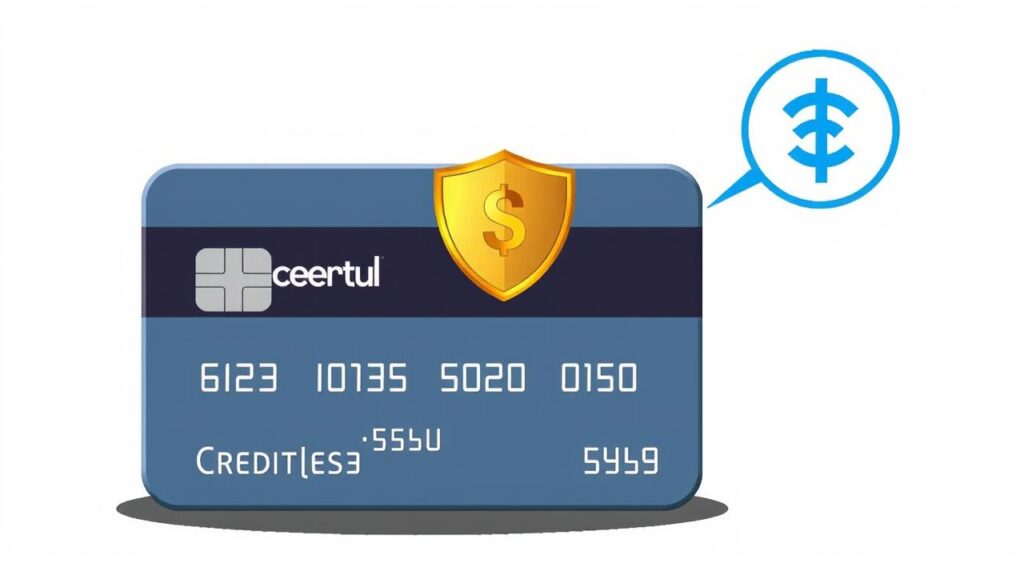
Conclusion
Achieving a high limit unsecured credit line is within reach when you understand the key requirements and take strategic steps to meet them. To qualify, you’ll need an excellent credit score, stable income, a low debt-to-income ratio, and an established credit history. Preparation is crucial before applying; check your credit reports, organize necessary documentation, and research lender requirements.
Responsible management of your credit line can lead to long-term benefits, including financial flexibility, emergency funding, and continued credit score improvement. Qualifying for high limit unsecured credit is a process that may take time but is achievable with strategic financial management. Start with realistic expectations and work toward higher limits through demonstrated responsible credit use. Remember, unsecured credit lines are powerful financial tools when used strategically, but they can lead to financial difficulties if mismanaged.

